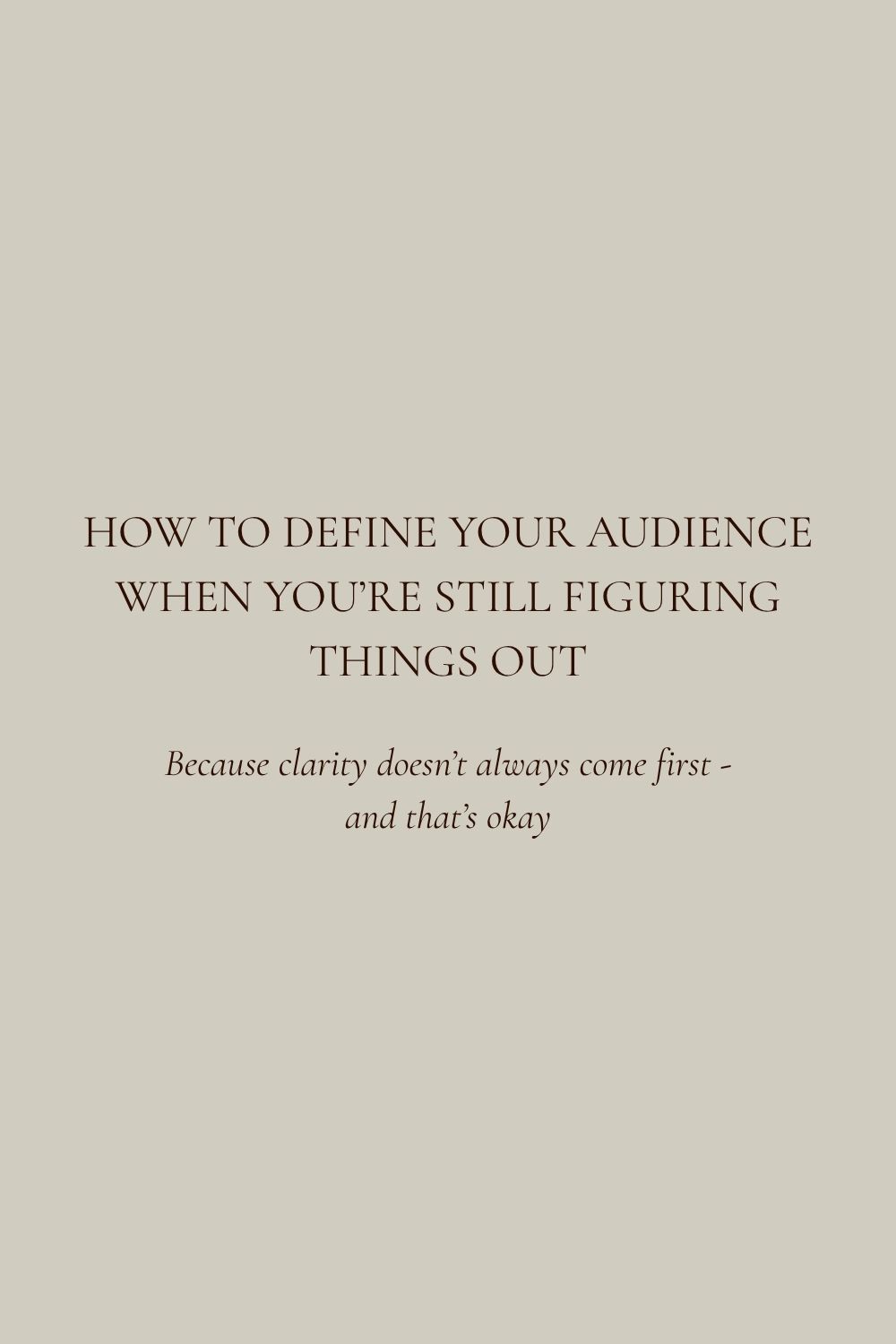Because clarity doesn’t always come first – and that’s okay
There’s a particular kind of stuckness that happens in the early days of business.
You’re full of ideas, scribbling notes, dreaming up offers… but when someone says “Who’s it for?”
You freeze.
Because you think you should know.
You want to know.
But if you’re honest?
You’re still figuring it out.
And that’s not only normal—it’s expected.
Most founders don’t wake up with a perfect customer profile in mind. They discover it through trial, curiosity, and conversations. So if you’re not there yet, this post is for you.
Let’s define your audience—with softness, space, and strategy.
Step 1: Look inward first
Before you try to “find” your audience, pause and ask: what do you want to be known for?
👉 What kind of work feels most energising?
👉 What stories do you find yourself drawn to?
👉 What problems do you feel excited to help solve?
When you get clear on your own values, it’s easier to attract people who resonate with them.
Clarity in your work leads to clarity in your people.
Step 2: Reflect on who’s already resonating
Even if you haven’t officially launched, chances are someone has:
👉 Asked for your advice
👉 Shared your content
👉 Said “I feel seen” after something you said or posted
This is valuable data.
Look through your DMs, your emails, your post comments. Who are the people showing up already? What are they asking? What language do they use?
You don’t have to guess your audience—you can observe them.
Step 3: Start with a “soft” niche
You don’t need to know their job title, star sign, and favourite coffee order just yet. Instead, define them by feel.
Try describing your audience like this:
👉 They’re creative but overwhelmed
👉 They’re craving a brand that feels like them
👉 They’ve been burned by cookie-cutter advice and want more intention
👉 They value aesthetics, emotion, and meaning in equal measure
These “vibes over demographics” give you a foundation to speak from—one that feels human and evolving, not rigid and over-defined.
Step 4: Test your message (and see who responds)
Once you have a loose sense of who your people might be, start sharing content that speaks to them.
👉 Talk about their frustrations
👉 Reflect on their dreams
👉 Name their fears out loud
Watch what lands. Notice which posts get saves, DMs, or “this is so me” replies. That’s your clarity growing—in real time.
Your audience will often reveal themselves through your messaging, not before it.
Step 5: Let it be a dialogue, not a definition
Too often, we treat defining our audience like homework. A one-time task we must get right before we begin. But the truth? Your audience is not a fixed point. They grow as you grow.
Instead of boxing yourself in, think of it as a conversation:
👉 Start speaking to the people you hope will find you
👉 Let your messaging attract and repel (both are helpful)
👉 Notice who sticks around—and adjust accordingly
You don’t have to “nail it” right away. You just have to start.
Final Thoughts: You’re allowed to be in discovery
The early stage of business is full of blurry lines. You’re experimenting, shifting, making sense of it all. Don’t rush to define what’s still unfolding.
Instead, choose clarity over certainty.
Be curious about who resonates.
Write to one person in your mind and see who replies.
And remember: you don’t find your audience all at once.
You meet them, one story at a time.
